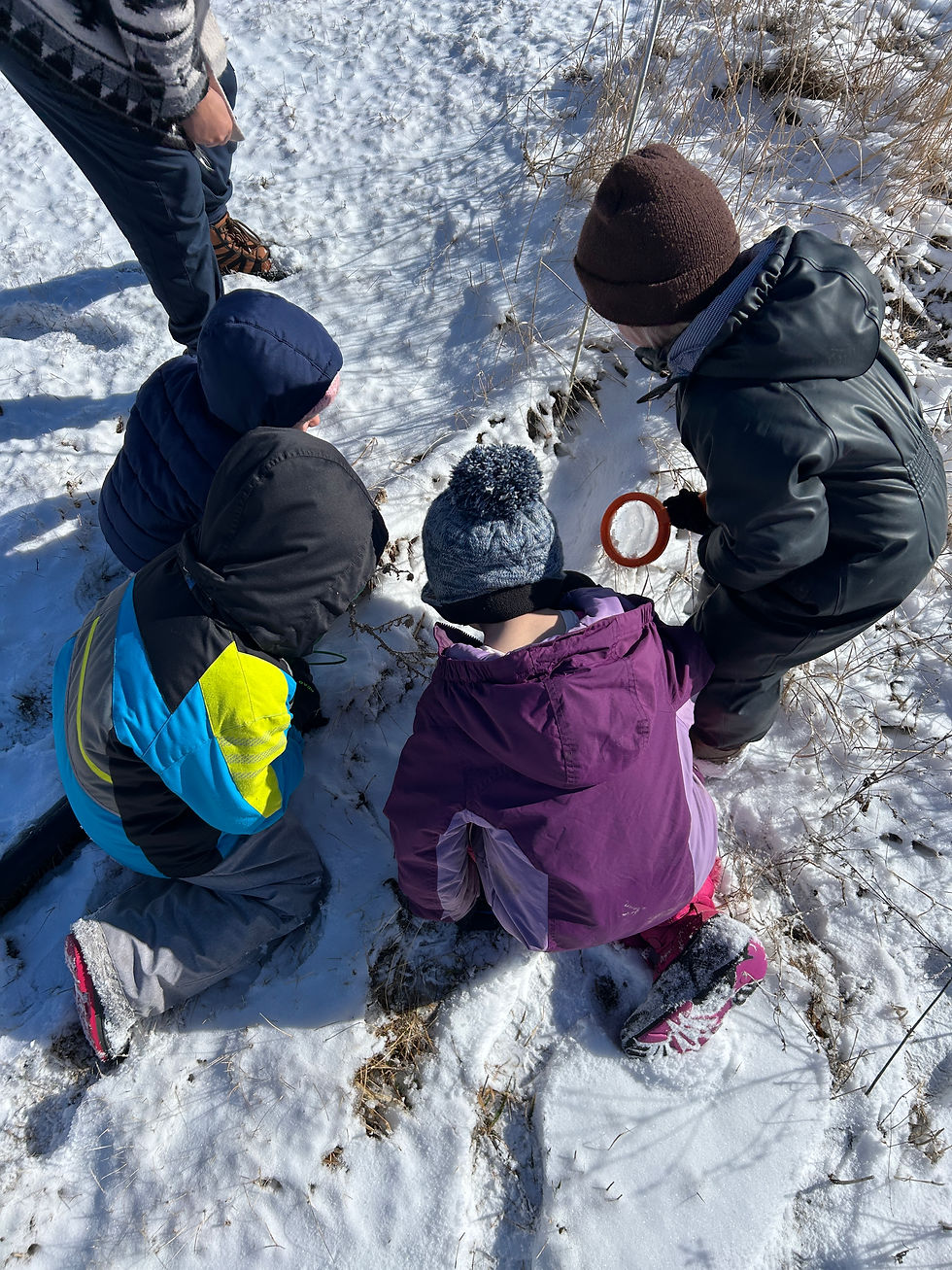Rethink Spring Yard Care
- Jenny Hill
- May 11, 2025
- 4 min read
Rs for Resilient Living Series
For most of us by this time of year, the idea of getting out to work in your yard, seeing the change of season first-hand, is a delicious dream that can’t come true soon enough. No question–being outside is good for all of us. But some of our go-to yard activities can be detrimental to beneficial insects if we jump into them before the weather has truly changed.
Here are some tips:
Hold off cutting down plant stems leftover from last season until the temperature is above 50 degrees for at least 7 consecutive days. Hollow plant stems are the winter homes of many beneficial insects, whether as adults or pupae. It’s best for these insects to emerge on their own.
Once it is time to cut down plant stems, leaving about 8” creates future homes for these same types of insects. Here is information from the University of Minnesota Extension service, complete with photos.
That same 50 degrees-for-at-least-7-days benchmark applies to removing leaves or other mulch from your garden. Leaves and mulch contain different beneficial insects who overwinter here such as ladybugs, damsel bugs, assassin bugs, according to savvygardening.com. Fun fact: Luna Moths’ cocoons even look like a leaf!
Ask Not What You Can Do for Your Lawn…
If we’ve convinced you to wait for warmer temperatures to do plant clean up, should you mow the lawn while you’re waiting? No is the short answer–and here’s a much more detailed answer.
In 2005, a research group working with NASA declared lawns as the single largest irrigated crop grown in the United States. Although we can hope that environmental awareness, especially around the needs of pollinators, has helped some of that land be returned to natural ecosystems, it’s always worth starting where you are to do what you can to be part of the solution.
To that end, here are three tips/specific resources that can be applied to your lawn for the general benefit to the environment:

1. No Mow May
Originating in the U.K., this idea has caught on in several places in the United States (including Edina, Minnesota for 2022). To participate it’s as simple as not mowing your lawn to allow habitats to develop for pollinators as well as wildlife. The Xerces Society offers free downloadable lawn signs and their initiative, Bee City USA, has extensive info on their website: https://beecityusa.org/no-mow-may/
2. Lawns to Legumes/Blue Thumb
The non-profit Blue Thumb works in conjunction with Minnesota Board of Water and Soil Resources to offer the Lawn to Legumes Pilot Program for installing pollinator-friendly native plantings in residential lawns. Resources include workshops, coaching, plant guides and cost-share funding. https://bwsr.state.mn.us/l2l
The program emphasizes protection of at-risk species, such as Minnesota’s state bee, the Rusty patched bumble bee which is federally endangered. The deadline for applying for 2022 cost-share funding was mid-February. At their website, however, you will find a wealth of resources, including where to sign up to be notified of future funding opportunities. And yes, they too have a lawn sign. The downloadable pdf is also available at their website.

3. Bee Lawns
A Bee Lawn is a lawn that incorporates specific flowering plants with traditional turfgrass. It can either be part of your existing lawn or a new lawn. Seed is sold specifically for Bee Lawns, a mixture of specific types of grass, clover, thyme and self-heal, a low-growing purple flower.
Bee Lawns can be used just like any other lawn–you can walk on it and mow it (although it will require less moving than a traditional lawn). The flowering plants included in a Bee Lawn were chosen for their ability to bloom and low heights and to continue to grow after being mowed.
Some of the benefits of a Bee Lawn listed in this article from the Minnesota State Horticultural Society include:
Foraging and nesting space for insects
Reduced need for water, fertilizer and mowing
Increased ability to withstand periods of flooding or drought
The University of Minnesota Extension Service too has an excellent page on Bee Lawns, based on research from the Bee Lab. Yes, I said Bee Lab–you may be excited to learn (as I was) that the University of Minnesota has a Bee Lab! Its mission is to promote the conservation, health, and diversity of bee pollinators through research, education, and hands-on mentorship.
A Bee Lawn may attract over 50 species of native bees. But that’s just 10% of the number of native bee species in Minnesota. If you are inspired to do more, the Bee Lab’s website has information links to planting bee flowers, creating nesting habitat, keeping plants pesticide-free, helping collect data and taking climate action.
If you know a first- through sixth-grader who might enjoy learning more about all kinds of pollinators, click here for details about Happy Dancing Turtle’s in-person Eco Camp 2022 in Pine River whose theme is “Catch the Buzz.” Not in the Pine River area? Kids from all over are invited to participate in the Eco Camp T-Shirt Design Contest.






Comments